Oh, and as I watched him on the stage
My hands were clenched in fists of rage
No angel born in hell
Could break that Satan’s spell
And as the flames climbed high into the night
To light the sacrificial rite
I saw Satan laughing with delight
The day the music died
-Don McLean, American Pie
Once ensconced in the hills above Los Angeles, Gram Parsons and his band began recording what would prove to be their only album, Safe at Home, which some pop music historians regard as the first country-rock album, but others regard as a straight country album performed by guys who look like they should be playing in a rock band. Whatever the case, by the time the album was released, in 1968, Gram had disbanded the International Submarine Band and unofficially joined the Byrds, replacing the recently departed David Crosby, who had determined that there wasn’t quite room in the band for both he and his ego.
Parsons’ time with the Byrds was rather brief, just four to five months, after which he was replaced by virtuoso guitarist Clarence White, who had been part of the Cambridge folk scene. Despite his brief tenure, Parsons is credited with having a major influence on the album that the band produced during that period, Sweetheart of the Rodeo, which is also regarded by some music aficionados as the first true country-rock album.
Soon after leaving the Byrds, Parsons ran into Richie Furay, who was casting about for a new band after the breakup of Laurel Canyon’s own Buffalo Springfield. Gram and Furay considered working together but quickly realized that they wanted to go in different musical directions, so Furay went to work putting Poco together while Parsons assembled the Flying Burrito Brothers. By 1969, Gram’s new band had taken shape, with Gram supplying lead vocals and guitar, Chris Hillman also on guitar, Chris Etheridge on bass, and “Sneaky Pete” Kleinow on pedal steel guitar. With various other local musicians sitting in, the band recorded and released The Gilded Palace of Sin, which is probably also regarded by some as the first true country-rock album. Byrd Michael Clarke would later join the band, as would soon-to-be-Eagle Bernie Leadon.
Also in 1969, late in the year, 23-year-old Gram hooked up with 16-year-old Gretchen Burrell. His new love interest was the daughter of high-profile news anchor Larry Burrell, who was very well-connected in Hollywood. Before long, Gretchen had moved into Parsons’ place at the notorious Chateau Marmont Hotel, with her parents’ blessings – because most wealthy parents, I would think, want their teenage daughter living in a debauched rock star’s drug den. Another guest at the hotel at that same time, incidentally, was Rod Stewart (at whose home, readers of Programmed to Kill will recall, one of the victims of the so-called Sunset Strip Killers would later be last seen).
At the tail end of 1969, Parsons and his fellow Burrito Brothers had the dubious distinction of playing as one of the opening acts at the Rolling Stones’ infamous free show at Altamont. Gram had become a very close confidant of the Stones, particularly Keith Richards, and he would later be credited with being the inspiration for the country flavor evident on the Stones’ Let it Bleed album.
Parsons had first met up with the Stones when they were in Los Angeles in the summer of 1968 to mix their Beggar’s Banquet album. Also hooking up with the Stones around that same time was Phil Kaufman, a recently-released prison buddy of Charlie Manson. Kaufman initially lived with the Manson Family after being released in March of 1968, and he thereafter remained what Kaufman himself described as a “sympathetic cousin” to Charlie. He also went to work as the Rolling Stones’ road manager for their 1968 American tour, which is the type of job apparently best filled by ex-convict friends of Charles Manson.
In late summer of 1969, following the probable murder of Brian Jones in July, the Stones were back in LA to complete their Let It Bleed album and prepare for yet another tour. According to Ben Fong-Torres, writing in Hickory Wind, “Mick and Keith stayed at Stephen Stills’s [sic] house near Laurel Canyon … Before Stills, the house had been occupied by Peter Tork of the Monkees.” (For the record, other reports hold that the Peter Tork house was in, not near, Laurel Canyon.)
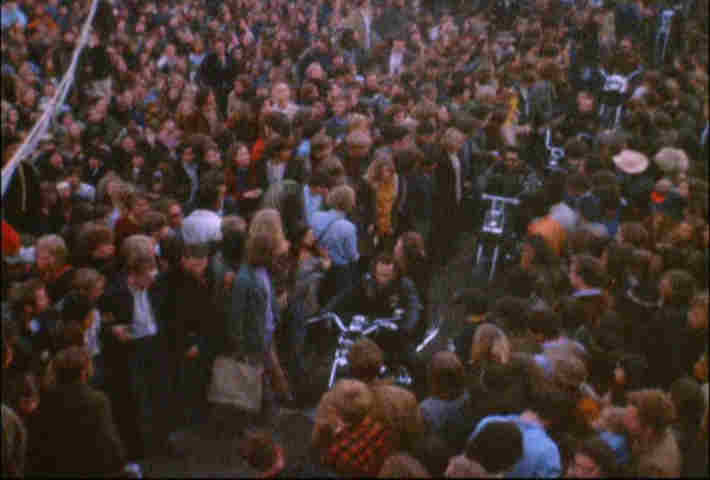
On December 6, 1969, temporary Laurel Canyon residents Mick and Keith, along with permanent Laurel Canyon residents Crosby, Stills, Nash & Young and the Flying Burrito Brothers, all gathered at a desolate speedway known as Altamont to stage a free concert. By the time it was over, four people were dead and another 850 concert-goers were injured to varying degrees, mostly by members of the Hell’s Angels swinging leaded pool cues.
The Angels had, of course, been hired by the Stones to ostensibly provide security. That decision is almost universally cast as an innocent mistake on the part of the band, though such a claim is difficult to believe. It was certainly no secret that the reactionary motorcycle clubs, formed by former military men, were openly hostile to hippies and anti-war activists; as early as 1965, they had brutally attacked peaceful anti-war demonstrators while police, who had courteously allowed the Angels to pass through their line, looked on. It was also known that the Angels were heavily involved in trafficking meth, a drug that was widely blamed for the ugliness that had descended over the Haight.
Perhaps less well known was that more than a few of those biker gangs had uncomfortably close ties to Charlie Manson, particularly a club known as the Straight Satans, one of whose members, Danny DeCarlo, watched over the Family’s arsenal of weapons. At least one of the performers taking the stage at Altamont, curiously enough, also had close ties to the motorcycle clubs; as was revealed in his autobiography, Crosby “had friends in every Bay Area chapter of the Hells Angels.”
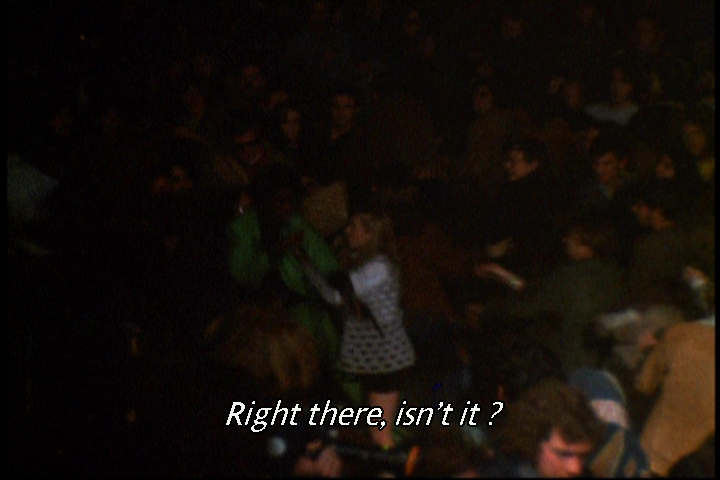
The death that the concert at Altamont will always be remembered for, of course, is that of Meredith Hunter, the young man who was stabbed to death by members of the Hell’s Angels right in front of the stage while the band (in this case, the Rolling Stones) played on. The song they were playing, contrary to most accounts of the incident, was Sympathy for the Devil, as was initially reported in Rolling Stone magazine based on the accounts of several reporters on the scene and a review of the unedited film stock.
Most accounts claim that Hunter was killed while the band performed Under My Thumb. All such claims are based on the mainstream snuff film Gimme Shelter, in which the killing was deliberately presented out of sequence. In the absence of any alternative filmic versions of Hunter’s death, the Maysles brothers’ film became the default official orthodoxy. Of course, someone went to great lengths to insure that there would be only one available version of events; as Rolling Stone also reported, shortly after the concert, “One weird Altamont story has to do with a young Berkeley filmmaker who claims to have gotten 8MM footage of the killing. He got home from the affair Saturday and began telling his friends about his amazing film. His house was knocked over the next night, completely rifled. The thief took only his film, nothing else.”
Contrary to the impression created by Gimme Shelter, Hunter was killed not long into the Stones’ set. But as the film’s editor, Charlotte Zwerin, explained to Salon some thirty years later, the climax of the movie always has to come at the end: “We’re talking about the structure of a film. And what kind of concert film are you going to be able to have after somebody has been murdered in front of the stage? Hanging around for another hour would have been really wrong in terms of the film.” What wasn’t wrong, apparently, was deliberately altering the sequence of events in what was ostensibly a documentary film.
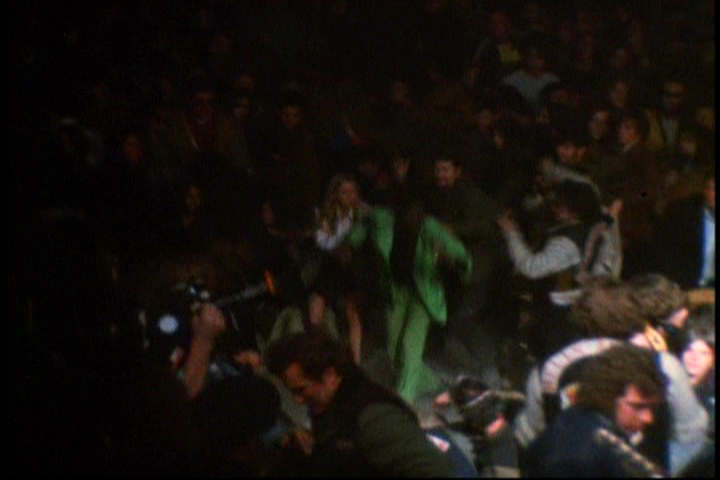
One of the young cameramen working for the Maysles brothers that day, curiously enough, was a guy by the name of George Lucas (it is unclear whether it was Lucas who captured the conveniently unobstructed footage of the murder.) Not long after, Lucas began a meteoric rise to the very top of the Hollywood food chain. Also present that day, and featured in the film gyrating atop a raised platform near the stage, was the King of the Freaks himself, Vito Paulekas.
Many of the accounts of the tragedy at Altamont include the demonstrably false claim that Hunter can unmistakably be seen drawing a gun just before being jumped and killed by the Angels (some accounts even have Hunter firing the alleged gun). The relevant frames from the film are included here for your review. What can certainly be fairly clearly seen is the large knife being brought down into Hunter’s back. But a gun being brandished by Mr. Hunter? If you can see one, then you either have far better eyes than I, or a far more active imagination. Or both.
The Angel who was charged with the murder and then ultimately acquitted, Alan David Passaro, was found floating facedown in a reservoir in March of 1985 with $10,000 in his pocket. Despite a widespread belief to the contrary, Passaro’s acquittal was not based on the jury having been convinced that Hunter had drawn a gun, but rather on the fact that the knife wounds that killed Hunter were apparently upstrokes, which meant that they were not the wounds inflicted on-camera by Passaro. He and/or someone else continued to stab Hunter after he was down, and it was those wounds, which the cameras didn’t clearly record, that killed him.
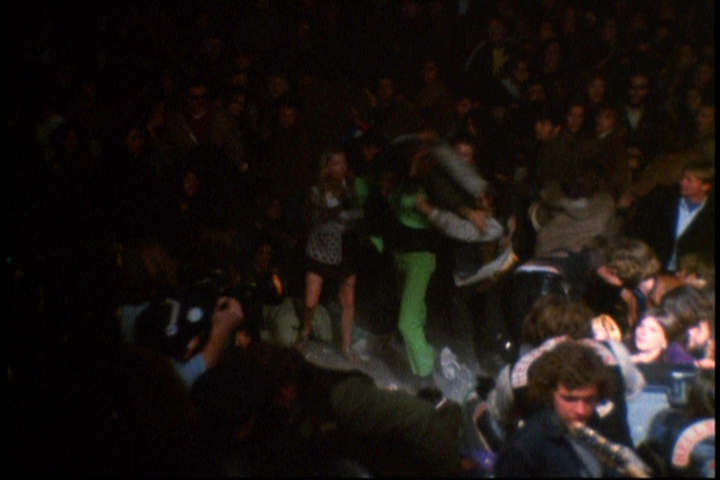
About one year after Altamont, otherwise obscure singer/songwriter Don McLean penned the lyrics to what was destined to become one of the most iconic songs in the annals of popular music: American Pie. Those lyrics are essentially a chronological recitation of various tragedies that shaped the world of popular music. Not long after a reference to the August 1969 Manson murders and their connection to the Laurel Canyon music scene (Helter Skelter in a summer swelter, The birds flew off with a fallout shelter, Eight miles high and falling fast), and just before a reference to the October 1970 death of Janis Joplin (I met a girl who sang the blues, And I asked her for some happy news, but she just smiled and turned away, I went down to the sacred store, Where I’d heard the music years before, but the man there said the music wouldn’t play), can be found a verse, reproduced at the top of this post, in which McLean characterizes the death of Hunter as a ritualized murder.
I, of course, would never make such a wild and reckless claim.
As was the custom with big events in the mid to late-1960s, particularly in the northern California area, Altamont was drenched in acid. And as was also the custom at that time, that acid was provided free-of-charge by Mr. Augustus Owsley Stanley III, also known as The Bear. At the so-called “Human Be-In” staged in January of 1967, for example, Owsley had kindly distributed 10,000 tabs of potent LSD. For the Monterey Pop Festival just five months later, he had cooked up and distributed 14,000 tabs. For Altamont, he did likewise.

The 1960s were, you see – and you can look this up if you don’t believe me – the era of brotherly love. So if someone happened to have, say, a cache of acid with a street value of $20,000-$30,000 (a considerable amount of money in the 1960s), he was naturally expected to hand it out for free to thousands of random strangers. Of course, probably the only person who routinely had such vast stockpiles of LSD was the premier acid chemist of the hippie era, Augustus Owsley Stanley.
No one – not Ken Kesey, not Richard “Babawhateverthefuckhecalledhimself” Alpert, not even Timothy Leary – did more to ‘turn on’ the youth of the 1960s than Owsley. Leary and his cohorts may have captured the national media spotlight and created public awareness, but it was Owsley who flooded the streets of San Francisco and elsewhere with consistently high quality, inexpensive, readily available acid. By most accounts, he was never in it for the money and he routinely gave away more of his product than he sold. What then was his motive? According to Martin Lee and Bruce Shlain, writing in Acid Dreams, “Owsley cultivated an image as a wizard-alchemist whose intentions with LSD were priestly and magical.”
To be sure, Owsley is revered by many as something of an icon of the 1960s counterculture – a man motivated by nothing more than an altruistic desire to ‘turn on’ the world. But then again, the trio listed in the preceding paragraph are revered by many as well, so you’ll excuse me if I’m a bit hesitant to embrace Owsley as some sort of anti-hero – especially given his rather provocative background and family history.
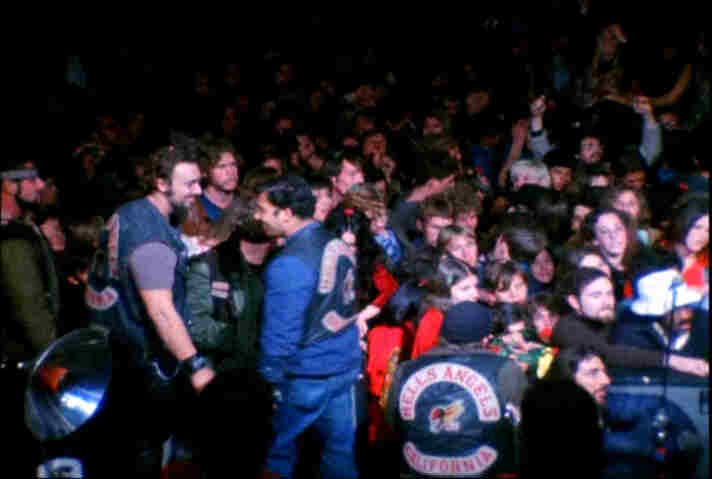
Augustus Owsley Stanley III is the son, naturally enough, of Augustus Owsley Stanley II, who served as a military officer during World War II aboard the USS Lexington and thereafter found work in Washington, D.C. as a government attorney. He raised his son primarily in – where else? – Arlington, Virginia. Young Owsley’s grandfather was Augustus Owsley Stanley, who served as a member of the U.S. House of Representatives from 1903 through 1915, as the Governor of Kentucky from 1915 through 1919, and as a U.S. Senator from 1919 through 1925. Senator Stanley’s father, a minister with the Disciples of Christ, served as a judge advocate with the Confederate Army. His mother was a niece of William Owsley, who also served as a Governor of Kentucky, from 1844 through 1848, and who lent his name to Owsley County, Kentucky.
During Owsley III’s formative years, he attended the prestigious Charlotte Hall Military Academy in Maryland, but was reportedly tossed out in the ninth grade for being intoxicated. Not long after that, at the tender age of fifteen, Owsley voluntarily committed himself to St. Elizabeth’s Hospital in Washington, D.C.. St. Elizabeth’s, it should be noted, had a far more sinister name upon its founding in 1855: the Government Hospital for the Insane. He remained confined there for, uhmm, ‘treatment’ for the next fifteen months. During that time, his mother, in keeping with one of the recurrent themes of this saga, passed away.
Owsley apparently resumed his education following his curious confinement, but he had reportedly dropped out of school by the age of eighteen. Nevertheless, he apparently had no trouble at all gaining acceptance to the University of Virginia, which he attended for a time before enlisting in the U.S. Air Force in 1956, at the age of twenty-one. During his military service, Owsley was an electronics specialist, working in radio intelligence and radar.
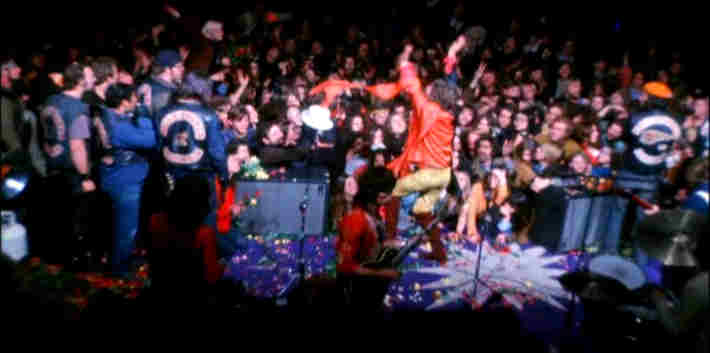
After his stint in the Air Force, Owsley set up camp in the Los Angeles area, ostensibly to study ballet. During that same time, he also worked at Pasadena’s Jet Propulsion Laboratory, which was undoubtedly the primary reason for his move to LA. In 1963, Owsley moved once again, this time to Berkeley, California, which just happened to be ground-zero of the budding anti-war movement. He may or may not have briefly attended UC Berkeley, which is where he allegedly cribbed the recipe for LSD from the university library.
Owsley soon began cooking up both Methedrine and LSD in a makeshift bathroom lab near the campus of the university. On February 21, 1965, that lab was raided by state narcotics agents who seized all his lab equipment and charged Stanley with operating a meth lab. As Barry Miles recounted in Hippie, “Berkeley was awash with speed and Owsley was responsible for much of it.” Nevertheless, Owsley walked away from the raid unscathed, and, with the help of his attorney, who happened to be the vice-mayor of Berkeley, he even successfully sued to have all his lab equipment returned. He quickly put that equipment to work producing some 4,000,000 tabs of nearly pure LSD in the mid-1960s.
Also in February of 1965, Owsley and his frequent sidekicks, the Grateful Dead, moved down to the Watts area of Los Angeles, of all places, to ostensibly conduct ‘acid tests.’ The group rented a house that was conveniently located right next door to a brothel, curiously paralleling the modus operandi of various intelligence operatives who were (or had been) involved in conducting their own ‘acid tests.’ The band departed the communal dwelling in April 1965, just a few months before Watts exploded in violence that left thirty-four corpses littering the streets.
Owsley had been with the Dead from the band’s earliest days, as both a financial backer and as their sound engineer. He is credited with numerous electronic innovations that changed the way that live rock music was presented to the masses – and likely not in a good way, given that his work as a sound technician undoubtedly drew heavily upon his military training.
In 1967, Owsley unleashed on the Haight a particularly nasty hallucinogen known as STP. Developed by the friendly folks at Dow Chemical, STP had been tested extensively at the Edgewood Arsenal as a possible biowarfare agent before being distributed to hippies as a recreational drug. Owsley reportedly obtained the recipe from Alexander Shulgin, a former Harvard man who developed a keen interest in psychopharmacology while serving in the U.S. Navy. Shulgin worked for many years as a senior research chemist at Dow, and later worked very closely with the DEA.
In 1970, Owsley began serving time after a conviction on drug charges. That time was served, appropriately enough, at Terminal Island Federal Correctional Institution, the very same prison that had, just a few years earlier, housed both Charlie Manson and Phil Kaufman. A few years later, it would also be home to both Timothy Leary and his alleged (but not actual) nemesis, G. Gordon Liddy. After his release, Owsley continued to work as a sound technician, eventually graduating to a new medium: television.
After that rather lengthy digression, we return now to our regularly scheduled program: the Gram Parsons saga. Along with Mick and the boys, Gram made a hasty exit from the chaos at Altamont via the Stones’ private helicopter. The next year, his Flying Burrito Brothers released their second album, Burrito Deluxe, which was produced by Jim Dickson, the man who played such a pivotal role in shaping Laurel Canyon’s first band, the Byrds. By June, Parsons had been booted out of the band, reportedly due to chronic alcohol and drug abuse. He quickly signed with A&M Records and was partnered with our old friend Terry Melcher.
Gram became a regular visitor to Melcher’s Benedict Canyon home, where the self-destructive pair worked on songs together, with Gram on guitar and Melcher on piano. John Phillips became a close associate of Parsons at this time as well. Meanwhile, sister Avis had been institutionalized back in New Orleans. She had gotten pregnant, after which Bob Parsons had moved quickly to have her committed and to have her marriage annulled. Little Avis reached out repeatedly to big brother Gram for help, but got none.
In late October of 1970, Gram went to A&M and signed out the master tapes of ten songs that he had recorded with Melcher; those tapes were never seen or heard again, as seems to happen from time-to-time with recordings made with Melcher. During roughly that same period of time, Parsons was busted with a briefcase full of prescription drugs. As would be expected, however, the charges were quietly dropped and Gram walked away unscathed.
There are many who claim, by the way, that the musicians under examination in this series were relentlessly persecuted by agents of the state, ostensibly to silence their voices of protest. But if that is true, then why is it that on more than one occasion when the state seems to have had solid evidence of crimes that could bring prison time, no action was taken? Our old friend David Crosby, for example, has candidly acknowledged that “the DEA could have popped me for interstate transport of dope or dealing lots of times and never did …” And John Phillips, busted for wholesale trafficking of pharmaceuticals, was, by his own account, “looking at forty-five years and got thirty days.” He began serving his sentence on April 20, appropriately enough, and served just twenty-four days – in a minimum security prison that offered “residents” such activities as “basketball, aerobics, softball, tennis, archery, and golf,” and that featured a “delicious kosher kitchen, an elaborate salad bar, and a tasty brunch on Sundays.”
Sorry, but we seem to have drifted off course once again. I’ll try to stay focused on the Gram Parsons story for the rest of this post.
In 1971, Gram married Gretchen Burrell. The lavish affair was held, curiously enough, at the New Orleans home of step-dad Bob Parsons, a fact that has left Gram’s chroniclers somewhat puzzled. Bob Parsons was, after all, the man who had – at least in the eyes of many family members – terrorized and institutionalized Gram’s younger sister, carried on a scandalous affair with the family’s babysitter, murdered Gram’s mother and subsequently married that babysitter, and repeatedly looted the family coffers. And yet it was Bob Parsons, of all people, whom Gram trusted to host his wedding, suggesting a bond between the two that would seem to defy conventional explanations.
That same year, Gram spent some time in France, hanging out once again with the Rolling Stones. The following year, he was signed to Reprise Records by Mo Ostin and he and Gretchen moved back into the Chateau Marmont, where Gram and Emmylou Harris began working on the songs that would make up his first solo album. Emmylou, as Fong-Torres notes, had been raised on “various military bases around Virginia,” so she quickly fit right in with the Laurel Canyon crowd.
In 1973, with his first solo album, entitled simply GP, due for release, “Gram and Gretchen finally moved out of the Chateau Marmont and found a cozy brown wood-shingled house on Laurel Canyon Boulevard, which wound its way north from Hollywood through the stars’ favorite canyon.” Working once again with Emmylou, Gram began working on tracks for what would be his posthumously-released second solo album, Grievous Angel.
As July of 1973 rolled around, a series of tragedies befell Parsons and the people around him. In July of the previous year, Gram’s friend Brandon DeWilde – who had introduced Gram to Peter Fonda, Dennis Hopper, Bruce Dern and Jack Nicholson, resulting in Gram’s involvement in The Trip – had been killed in a traffic accident. A year later, on July 15, 1973, Gram’s friend and fellow musician, Clarence White, was hit by a car and killed. According to Fong-Torres, “Around the same time that Clarence White was killed, Sid Kaiser, a familiar face in the Los Angeles rock scene, a close friend of Gram’s and, not so incidentally, a source of high-quality drugs, died of a heart attack.” Just after those two deaths, “In late July 1973 … [Gram’s] house in Laurel Canyon burned down.”
Other sources, for the record, have placed that house in Topanga Canyon rather than Laurel Canyon. Whatever the case, Gram was home when the house caught fire and was briefly hospitalized for smoke inhalation. Having lost their home and all their possessions, Gram and Gretchen “moved into Gretchen’s father’s spacious home on Mulholland Drive in Laurel Canyon.” Because the Burrells, naturally enough, also lived in everyone’s favorite canyon.
Gram wouldn’t live in the Burrell estate long though; on September 19, 1973, Ingram Cecil Connor III died in a nondescript room at the Joshua Tree Inn. His death is usually attributed to a drug overdose, but toxicology reports suggest otherwise. Parsons’ death received minimal press coverage, partly because, as fate would have it, singer/songwriter Jim Croce went down in a blaze of glory the very next day, on September 20, 1973. But though the media had moved on, the Gram Parsons story wasn’t quite over yet.
Parsons had been a regular visitor to Joshua Tree National Park, where one of his favorite pastimes was said to be ingesting hallucinogenic drugs and then searching for UFOs. Sometimes he would take friends, such as Keith Richards of the Rolling Stones, along with him to help with the search. I’m no expert, to be sure, but it seems to me that if your goal is to succeed in spotting UFOs, then the dropping-acid strategy is probably a pretty good approach. But again, that’s not really my area of expertise.
In September of 1973, Gram was accompanied to Joshua Tree by his personal assistant, Michael Martin, Martin’s girlfriend, Dale McElroy, and Parson’s former high school sweetheart, Margaret Fisher. As the story goes, the group soon ran out of pot and quickly dispatched Martin back to LA to pick up a fresh supply. He was, therefore, officially not there at the time of Gram’s death, though why he hadn’t returned has never been explained, especially given that his job was, specifically, to keep an eye on Gram and monitor his drug intake.
How Gram Parsons died is anyone’s guess. There are as many versions of the event as there were witnesses to it. Actually, that’s not quite true – there are more versions than there were witnesses, because some of those witnesses have told more than one story. Officially, Parsons died of an overdose, but forensic testing revealed no morphine or barbiturates in his blood. Morphine showed up in his liver and urine, but as experts have noted, those toxicology results indicate chronic, but not recent, use.
Police seem to have had little interest in getting at the truth and made no apparent effort to reconcile the various conflicting accounts. Details of the incident – such as how long Gram had been left alone, whether he was still alive when discovered, who made that discovery, etc. – were wildly inconsistent in the accounts of Fisher, McElroy, and Frank and Alan Barbary (the Inn’s owner and his son, who were also witnesses, and whose accounts conflicted both with each other and with the girls’ accounts).
At the hospital, police spoke briefly with the two girls and then released them. Within two hours, Phil Kaufman was on the scene to pick up Fisher and McElroy. Bypassing the police and the hospital, Kaufman went directly to the Inn, which the girls had returned to, and quickly hustled them straight back to LA. Police never spoke to either of the women again, despite the conflicting accounts and the open question of what exactly it was that killed Gram.
On the autumnal equinox of 1973, Kaufman and Martin, driving a dilapidated hearse provided by McElroy, arrived at LAX to claim the body of Gram Parsons. Apparently no one, including the police officer who was nearby, found it at all unusual that two drunken, disheveled men in an obviously out-of-service hearse (it had no license plates and several broken windows) had arrived without any paperwork to claim the body of a deceased celebrity. In fact, according to Kaufman’s dubious account, the cop even helped the pair load the casket into the hearse – and then looked the other way when Martin slammed the hearse into a wall on the way out of the hangar.
Kaufman and Martin then drove the body back out to Joshua Tree, doused it with gasoline and set it ablaze. Local police initially speculated that the cremation was “ritualistic,” which indeed it was, but such reports were, and continue to be, scoffed at.
On September 26, LAPD detectives, led by anchorman Larry Burrell, came knocking on Kaufman’s door with warrants to serve. Bizarrely enough, director Arthur Penn was there with a full crew shooting scenes for the film Night Moves with star Gene Hackman (because when you’re a friend of Charlie Manson’s, it would appear, everyone in Hollywood wants to hang out with you). While the crew continued working, Kaufman was taken in, but he was back just a few hours later. In the end, he and Martin were fined $300 each plus reimbursement for the cost of the coffin.
In January 1974, four months after his death, Grievous Angel was released to critical acclaim and public indifference. Later that year, Gram’s adoptive father, Bob Parsons, died as well, reportedly of alcohol-related illness. He had apparently been making moves aimed at gaining control of the deceased musician’s estate. In keeping with family tradition, Bob failed to make it to the age of fifty (Gram’s real dad, Coon Dog, had died at forty-one, his mother at forty-two, and Gram at just twenty-six).
By sheer coincidence, no doubt, the deaths of Gram and Bob Parsons were followed by the bankruptcy of much of the Snively family business, which also occurred in 1974. Around that same time, Little Avis gave birth to daughter Flora. Sixteen years later, both were killed in a boating accident in Virginia. Avis had made it all the way to age forty.

Didn’t Alpert change his name or call himself Rammed Ass?
Actually, “Stills’s” is grammatically correct.
Who got Gram Parsons estate?
The Jet Propulsion Laboratory has connections to a Rockefeller, Marvel Whiteside “Jack” Parsons, and Naval Intelligence L Ron Hubbard.
You cannot cremate a body by dousing it in gasoline and setting fire to it!!!! In fact, burning anything by dousing it in gasoline is something nobody tries more than once- It is a spectacularly bad way too try to burn stuff. The gasoline on a dead body ( which is about 70% water) would flash explosively and quickly burn off, leaving the body just charred on the outside. You would need a car-sized stack of good firewood, and properly stacked- see how hey do it in Varanasi. If it could be done in the open air with less wood I assure you those folks would be doing it.
It’s a fact Don Henley of the Eagles was in GP’s band Shilo.
For the first time in 50 years, the lyrics to “American Pie” finally begin to make sense. Totally eerie.
If you go to Glenn necks 2 part analysis of American pie, it lines up pretty good with what’s here. It goes into more detail and I think was well done.
Since I started rereading this series; Ralph “Sonny Barger” has died (AFFA). There is no question in my mind that The “Hippies” were brought down by a controlled demolition that involved so many moles it boggles the mind. Angleton, LeMay et al were hands on involved and knew more than anyone in the scene. Bugliosi brought us both the “Helter Skelter” fiction and told the world that RFK bought it. Culture Industry + Pharma + Hypnosis + ONI /Air Force add a dash of controlled opposition and the essence of blackmail = SHAZAM
“…..demonstrably false claim that Hunter can unmistakably be seen drawing a gun” – The gun can clearly be seen in the second image. Its outline stands out dramatically against the greyish top of the lady next to Mr Hunter.
“What can certainly be fairly clearly seen is the large knife being brought down into Hunter’s back” – It’s not at all clear. I can see the hand of the HA member connecting with the side of Mr Hunter’s suit jacket, but I see no knife. I cannot see a knife being brought down into anyone’s back in any of the images.
“But a gun being brandished by Mr. Hunter? If you can see one, then you either have far better eyes than I, or a far more active imagination. Or both.” – Curious, and rather self-righteous statement to make when it’s clear the opposite is true.
Having said that, this entire article is fascinating. I found if after David McGowan was mentioned on Christmas Day’s “Live” from The Why Files on YouTube.
The Grateful Dead spent the early part of 1966 in Los Angeles, not 1965 and after the Watt’s riot.
Just a bit of nit picking